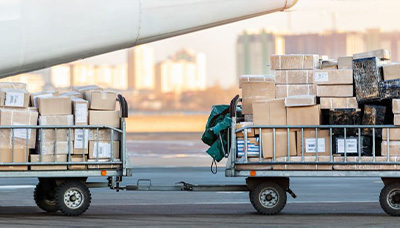
C-TPAT Pre-Audit Training
All-Inclusive – Inspection Service All Over China
Do you know what C TPAT AUDIT is? If the answer is yes, you can move on to other topic; however, if that’s all you need to know, you should read this article all the way through. Here, we’ll inform you of all the important information regarding C-TPAT compliance, its specifications, and other relevant details. Learn the importance of C TPAT AUDIT by reading this article through to the end.
C-TPAT: What is it?
C-TPAT stands for Customs-Trade Partnership Against Terrorism and is an initiative of US Customs and Border Protection (CBP). It is a voluntary program where participants work to protect supply chains from radical weapons like those used for massive amounts of destruction.
This partnership is for businesses involved in the global supply chain, including retailers, customs brokers, terminal operators, transporters, and foreign suppliers to American manufacturers. Organizations that want to participate in C-TPAT must first submit an application.
This application is being submitted to compare the supply chain safety procedure to the C-TPAT requirements or guidelines that the trade community and CBP jointly developed. A U.S. Customs and Border Protection C-TPAT Supply Chain Security Specialist will contact the participant after they have finished filling out the online application to begin the validation process.
Advantages of C-TPAT
At the American borders, companies with supply chains that meet CTPAT requirements are subject to inspection. Customs officers were put at ease as a result, allowing them to focus on high-risk cargo. The main justification is that your main idea benefits from being unloaded more quickly. Aside from that, the C TPAT certification has a ton of benefits, according to the U.S. Customs and Border Protection website:
- the decrease in borderline wait times.
- inspections at the front of the line.
- A smaller number of CBP inspections.
- a CBP supply chain security specialist is assigned to your business.
- By signing mutual recognition agreements with the United States, foreign customs administrations have the benefit of knowing that the United States is a trustworthy trading partner.
- acceptance of additional U.S. government pilot initiatives, such as the Secure Supply Chain program run by the Food and Drug Administration.
- Receiving preference to start a business following a global accident or terrorist attack.
- Whether an importer is eligible to participate in the Importer Self-Assessment program (ISA).
- obtaining access to the CTPAT web-based portal system and a collection of useful training resources.
- industry-specific Centers of Excellence and Expertise at CBP are given top consideration.
- Possibility of immunity from stratified exams, which require customs officials to count each carton individually to verify that it exactly matches the BOL.
- the acceptance of low-risk shipments at land borders to the Free and Secure Trade (FAST) lanes.
What requirements must an importer meet to be eligible for C-TPAT?
CTPAT membership is open to a variety of business entities, including importers, exporters, customs brokers, carriers, third-party logistics providers, and consolidators. If you are an importer and want to meet the requirements to join CTPAT, you must meet the following standards:
- You must be a current US importer of goods or a non-resident importer from Canada who has brought goods into the US in the last 12 months.
- A verified enduring import bond that is registered with CBP and deals with a business office with staff in the US or Canada is required.
- An active US importer of record (IOR) number is required.
- You are equipped to handle the CTPAT supply chain security requirements outlined in the CTPAT Importer Agreement, where you will be named as a company officer and the primary cargo security officer accountable for CTPAT.
- You have the skills necessary to complete a supply chain security profile in the CTPAT portal, understanding how it will establish, uphold, and improve internal policy to adhere to the CTPAT importer security standard.
- At the time of the application for which a final decision or administrative nature has been provided, you are not required to pay any debts due to CBP.
What prerequisites must a C-TPAT exporter meet?
You must satisfy the following requirements to be a C-TPAT exporter. Just take a look to learn:
- The exporter of C-TPAT must be an active U.S. exporter with a valid Employer Identification Number or Dun & Bradstreet number, as well as having a U.S.-based business office.
- The individual should be in possession of a registered export safety program and a chosen officer or manager who will serve as the main point of contact for the CTPAT program.
- The exporter must agree to follow the CTPAT supply chain security requirements as they are laid out in the CTPAT.
- In order to meet the CTPAT exporter security requirements, the exporter must submit to CBP a CTPAT supply chain security profile that details how the exporter will handle and strengthen its internal policy.
- As an exporter, you should be in good standing with federal agencies like the Department of Commerce, Department of Defense, Department of the Treasury, Nuclear Regulatory Commission, Department of State, and Drug Enforcement Administration. You should also have an acceptable level of adherence for export starting for the most recent 12-month period.
C-TPAT Compliance: What is it?
In order to ensure that your company is C TPAT compliant and has all the necessary documentation, a few things need to be under control. You must concur with the organizations where your employees work that conduct background checks on them, including export control, DMV, and FBI checks.
A copy is required as documentation that the screening process has been completed. You must view and evaluate your agreements, supplier, service provider, and customer database if you are a business partner.
Your foreign traders must complete and submit their C TPAT questionnaire to you, look for any gaps in the system, develop a plan to close them, and keep all relevant paperwork. You must locate and hold onto the C TPAT certificate for transporters. By doing so, you will demonstrate your commitment to maintaining your files, which is important when confirming your C TPAT status.
Importance of Compliance Audit
A compliance audit is built on a thorough examination of how closely a company complies with regulatory requirements. The thoroughness and specificity of compliance preparations, safety regulations, user access restrictions, and risk management techniques are all examined in audit reports.
Two internal or external types can help a business find areas for improvement in its regulatory compliance procedures. In some circumstances, the advice provided by a compliance audit can help you manage risk while avoiding potential legal issues or federal fines for noncompliance.
Compliance programs are constantly changing as new regulations are used every day and existing ones are altered, much like the laws that apply them. Internal business procedures can be improved or changed as regulations and requirements change, according to compliance auditing.
Which Businesses Are Achieving CTPAT Certification?
Here are a few businesses that are pursuing CTPAT certification. Take a look to see which ones they are:
- Operators of terminals
- Importers
- Customs agents
- Sea transport
- Carriers who travel over land
- Companies that provide third-party logistics (3PL)
- Foreign producers
- Rail transport
- Consolidators

Where Should I Concentrate During a CTPAT Audit?
There are some areas you need to pay particular attention to when auditing CTPAT. Check out these to learn what adjustments you should make to advance in the right direction:
- Risk evaluation.
- Paperwork and accurate records.
- Measures and controls for shipments.
- Meeting the minimal safety standards for personnel, physical assets, and technology
- Systems for managing safety and warehousing.
- Documentation, procedures, and firm policies.
- Documentation on the distribution network.
The C TPAT Program’s objectives
The C TPAT program is used by businesses for a variety of reasons. Some of them need to follow here:
- Playing a direct part in the fight against terrorism.
- A predetermined quantity of CBP inspections.
- Processing with priority for CBP analysis.
- A prerequisite for the C TPAT training lectures.
- Participation in the program for importer self-assessment is required.
- Penalty reduction in certain circumstances.
- Given a supply chain expert and a safety consultant.
- Importers in Tier III may submit applications for DHS Safety Act block designation.
- Exporters who give CBP permission to share their information with other customer agencies get special treatment during controlled inspections in some nations.
How to get a C-TPAT Certificate in steps
The following actions must be taken and checked in order for you to receive the certificate:
- The first step is to look at the CTPAT Minimum Security Criteria while taking into account your company’s requirements for the eligibility program.
If selected, you must register for an account on the CTPAT.gov website and sign in.
- Following that, you will submit a brief application via the CTPAT portal system and be given the option to participate.
- Then, as part of your online application, you will be required to complete a self-evaluation. The CTPAT criteria will be used as the basis for a preliminary self-audit of your supply chain security procedures.
- Finishing a supply chain security profile is the next step. In the security profile, you must explain how you are meeting the minimum security requirements of CTPAT.
- After you complete the online application procedure, U.S. Customs and Border Protection will assign your business a CTPAT supply chain security specialist (SCSS).
How Can I Obtain a C-TPAT Certificate?
As it already mentioned, C-TPAT is an entirely voluntary program. To determine what kinds of security risks the business is facing, a safety risk assessment is conducted. A supply chain safety profile should be completed in addition to the evaluation. A C-TPAT Supply Chain Security Specialist will help the company after you’ve finished these steps. It could take a year to become certified.
What is the C-TPAT Process?
whenever members of the trade community register to become C-TPAT members. They can benefit from a variety of advantages that speed up the customs clearance procedure. More importantly, participation in C-TPAT improves the security and accessibility of the customs clearance process.
Customs and Border Protection (CBP) can reduce the number of analyses when they are aware that a particular business has C-TPAT certification. Exams performed in front of the line are another benefit.
Importers can benefit from quicker import processing and a secure supply chain with C-TPAT Certification. Because the CBP is aware that the company has expended time and effort to prioritize border security, these benefits can be granted to C-TPAT-certified businesses.
Final Reflections
You likely understood the meaning of C-TPAT, what a compliance audit is, and what the requirements are after reading this article. Without a doubt, as time goes on, more and more businesses consider connecting with C-TPAT in order to maximize their professional potential.
If you have already used it, that is great. However, if you are still debating it, now is the time to act. Take full advantage of the listed benefits; we hope you won’t regret it.









